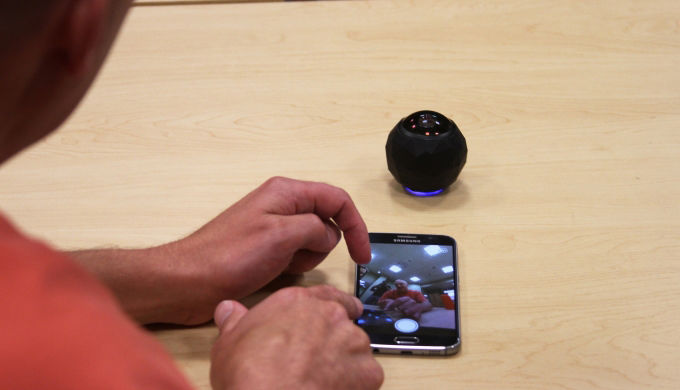IdeaBase experiments with virtual reality technology
February 21, 2017
Since September, Kent State’s IdeaBase has been incorporating virtual reality equipment into their design firm and have enhanced student portfolios by teaching them specialized and unique skills.
IdeaBase is a design agency that employs students from the College of Communication and Information and other colleges on campus. They specialize in user experience testing, analysis, design and virtual reality.
This small agency experience allows students to work with real clients on real projects, while still in college. IdeaBase found that to give students the most practical experience, they needed to break into the virtual reality market.
CCI Dean Amy Reynolds said she pushed for this technology to be brought into the college after talking to alumni and professionals in the communications field. Reynolds said most alumni wished they would have had the experience of virtual reality while at Kent State.
“All of them (professionals and alumni) said that giving students new tools for experimentation, like VR cameras, would be great,” she said. “If we wait until a technology is mainstream, it can be harder to innovate and create in a forward-thinking way.”
IdeaBase worked with Reynolds and other faculty to incorporate virtual reality at their design firm downtown, as well as in the Student Resource Lab in Franklin Hall.
Christopher Hallahan, the user experience designer at IdeaBase, teaches classes for CCI at the firm, and understands the benefit of getting these experiences early on in a career.
“It shows initiative if a student participates in a program like this and works on projects while in school,” Hallahan said.
With virtual reality still an emerging field with a high barrier for entry, technology is usually expensive and focuses on game development. This leads to questions about how CCI students can fully apply this to their careers.
IdeaBase puts an emphasis on making sure students of all disciplines gain valuable skills and learn how to apply it specifically to their program.
“One application we are looking at is bringing virtual reality into the classroom a little bit more,” Hallahan said.
Courses that are taught in house at Ideabase include glyphics, responsive web design and an advanced responsive web design class, which introduce students at varying levels to this technology.
By introducing this technology into more classes in Journalism and Mass Communication (JMC), Visual Communication Design (VCD) and the user experience design minor, students will learn how to directly apply their knowledge from these tools to their coursework and future careers.
One of the struggles is how this technology will integrate with media outlets and devices already used by the public.
Kristin Dowling, director of IdeaBase, said many businesses are interested but don’t know how virtual reality would specifically benefit them.
“The content is the piece that everyone is struggling with,” Dowling said. “What can you do that you can’t do already in two-dimensional media?”
Sports marketing firms and businesses like Facebook have shown interest in technology like virtual reality and 360-degree video but haven’t implemented it commercially on a large scale. Companies like Samsung and Google have released their own virtual reality gear, yet Apple hasn’t even entered the market.
“I think there is just so many different applications (of virtual reality) and interest level; no one has pulled the trigger on it,” Dowling said.
Providing students with this technology early on, with virtual reality still in its early stages, will give CCI room to grow and stay up-to-date on new developments.
“We are dipping our toes into it,” Dowling said. “We can’t make this investment and have it be obsolete in a few years.”
The technology available at IdeaBase mimics the affordable virtual reality equipment currently available in the real world. This allows students to experiment with different projects and test out new design and developmental perspectives.
“We’re providing these things because we think students will have ideas before we do,” Hallahan said. “They’ll be able to go to employers and tell them that they’ve had experience working with this technology.”
IdeaBase prides themselves on not only their technological resources, but their collaborative environment and experienced staff.
“It’s not just the equipment; it’s the analysis and working under (Hallahan) that is so valuable,” Dowling said. “You get to have experiences in the classroom but get to come here and collaborate with students with different majors.”
The proximity of IdeaBase to campus also makes using their resources and taking advantage of their broad expertise easy for CCI students.
“It’s cool because it’s right here, and they (students) don’t need to go somewhere special,” Hallahan said.
CCI continues their commitment to providing relevant and innovative resources for their students through pushing for new technology, in and out of the classroom. Reynolds said this dedication exposes students to new technology and helps them have an edge in the professional world.
“Because we live in a technology-rich environment and our students will be forced to adapt to constantly changing technology,” Reynolds said, “we need to provide new tools in CCI so students can not only learn these tools but also understand how to navigate an ever-shifting landscape.”
Molly Spillman is the CCI reporter, contact her at [email protected].

























